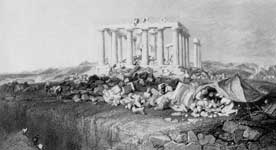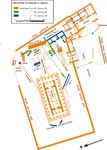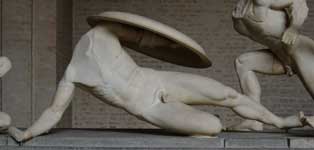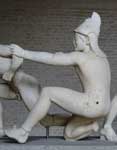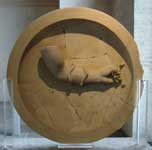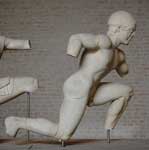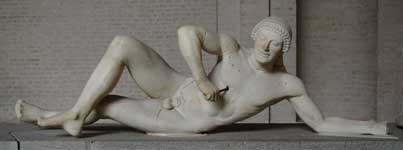.
Part 1
In Aegina, as you go towards the mountain of Zeus, God of all the Greeks, you reach a sanctuary of Aphaea, in whose honor Pindar composed an ode for the Aeginetans. The Cretans say (the story of Aphaea is Cretan) that Carmanor, who purified Apollo after he had killed Pytho, was the father of Lubulus, and that the daughter of Zeus and of Carme, the daughter of Eubulus, was Britomartis. She took delight, they say, in running and in the chase, and was very dear to Artemis. Fleeing from Minos, who had fallen in love with her, she threw herself into nets which had been cast (aphemena) for a draught of fishes. She was made a goddess by Artemis, and she is worshipped, not only by the Cretans, but also by the Aeginetans, who say that Britomartis shows herself in their island. Her surname among the Aeginetans is Aphaea; in Crete it is Dictynna (Goddess of Nets). Pausanias
The Late Archaic period pediment sculptures depicting warriors in battle at the First and Second Battle of Troy were retrieved from the ruined Temple of Aphaia (or Aphaea) at Aegina (a 13.75m x 29m temple) and brought to München (Germany) in 1811. The sculptures were bought by King Ludwig I of Bavaria and they were restored and modified by the sculptor Thorwaldsen. These restorations have been removed and a new reconstruction of the East and West Pediment sculptures can be seen in the Glyptothek in München.
See Computer Reconstructions of the Aphaia Temple
West Pediment
War of Troy with Ajax and Teucros (or Teucer) the sons of Telamon. This is the second Greek Expedition against Trojans led by Agamemnon and which is known from Homer's Iliad. Another hero was Achilles the son of Peleus. The Aeginetans were proud for these heroes being their ancestors and probably also this western pediment was also produced to commemorate the contribution of Aegina in the battle of Salamis.

Note how the artists have put reclining figures in the corners (in form of dying warriors). In this way the triangular area is filled optimal. The sculptures are arranged in pairs.

1 Shield of the Greek warrior wounded by Paris
2-5 2 Greek warrior hit by Paris?, 3+4 warrior pair, (5 Paris with his bow)
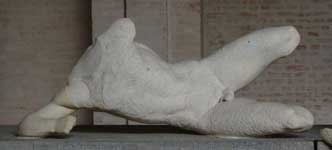

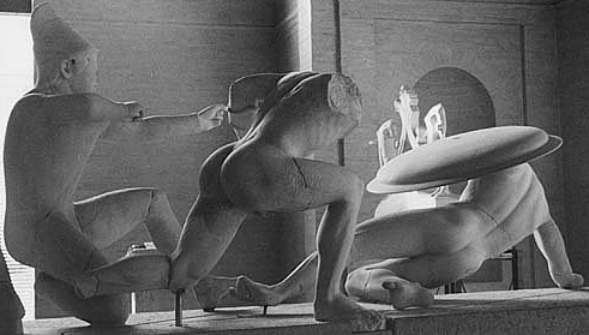

Paris with a Scythian helmet (reconstructed in color)

Aphaia pediment polychrome model W-XI Glyptothek Munich
6 Greek warrior
7-9 7 Ajax, 8 Athena, 9 Trojan warrior.
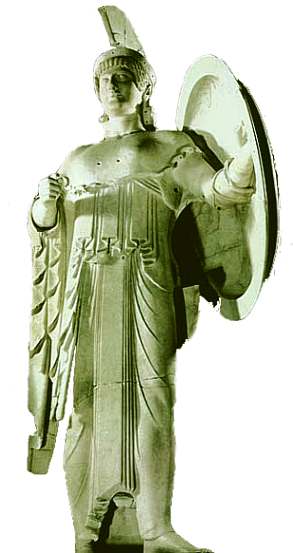
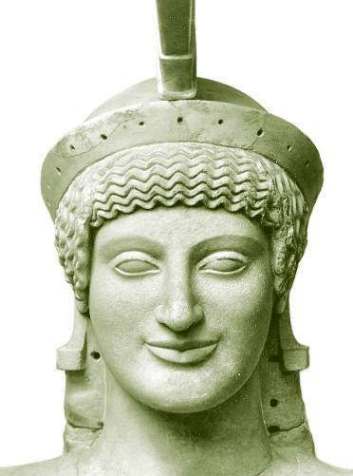
The smiling Athena, although 1.68 m she is as a goddess larger than any other figure.

Aphaia pediment Athena W-I Glyptothek Munich 74
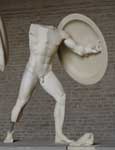
9. Aphaia pediment Trojan warrior W-II Glyptothek Munich 76
10-13 10 Greek, 11 Greek Teukros), 12+13 warrior pair
| Ancient Greece
Science, Technology , Medicine , Warfare, , Biographies , Life , Cities/Places/Maps , Arts , Literature , Philosophy ,Olympics, Mythology , History , Images Medieval Greece / Byzantine Empire Science, Technology, Arts, , Warfare , Literature, Biographies, Icons, History Modern Greece Cities, Islands, Regions, Fauna/Flora ,Biographies , History , Warfare, Science/Technology, Literature, Music , Arts , Film/Actors , Sport , Fashion --- |

